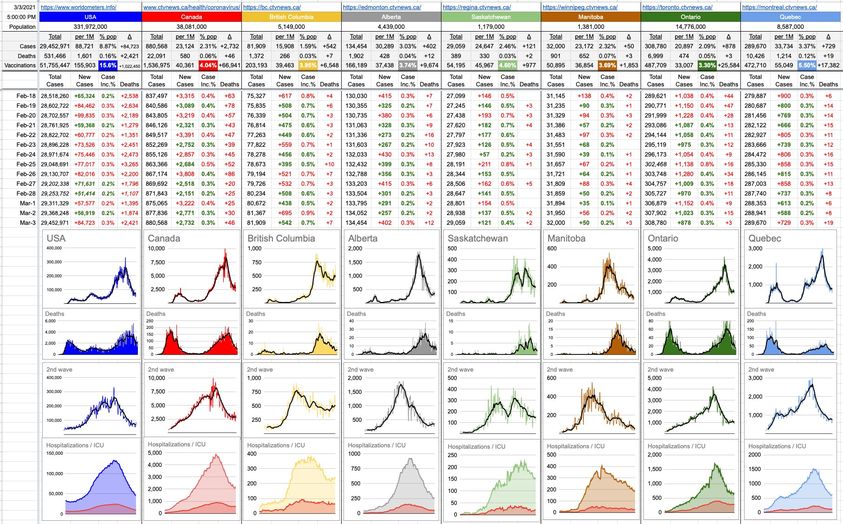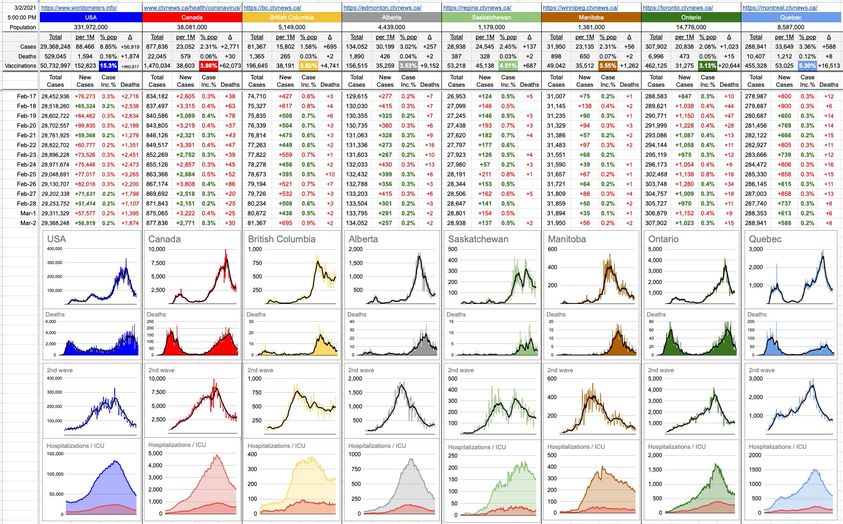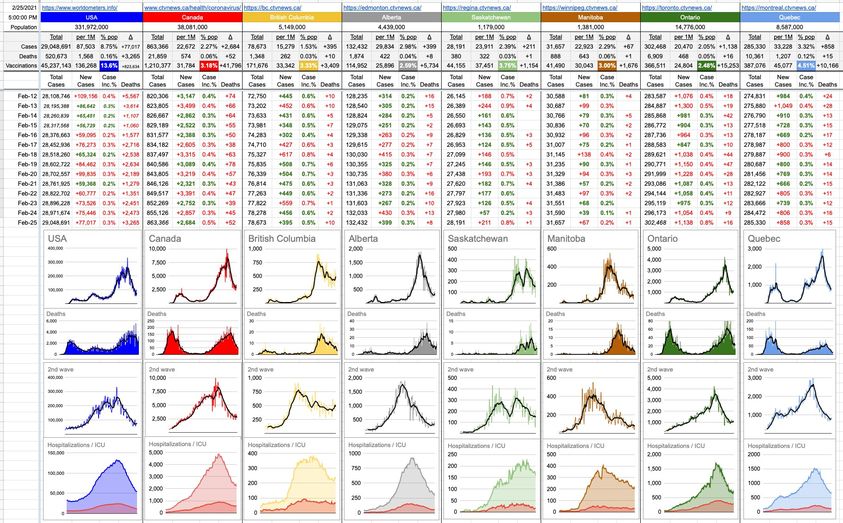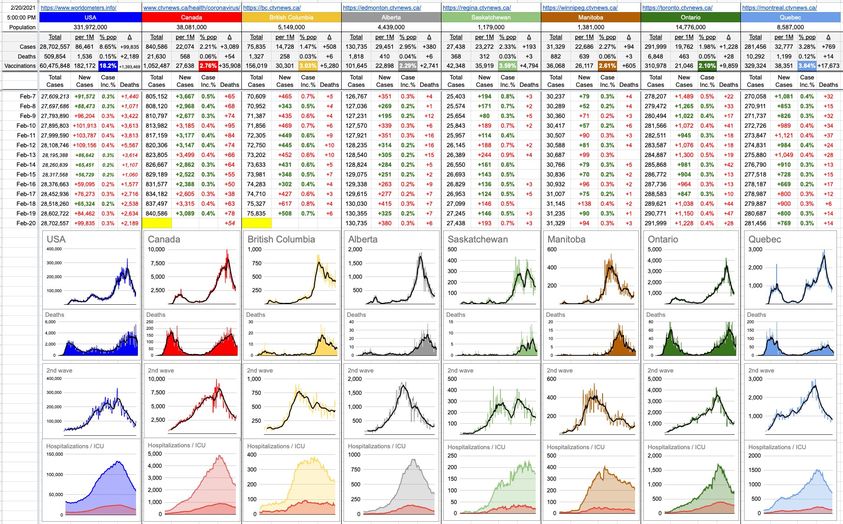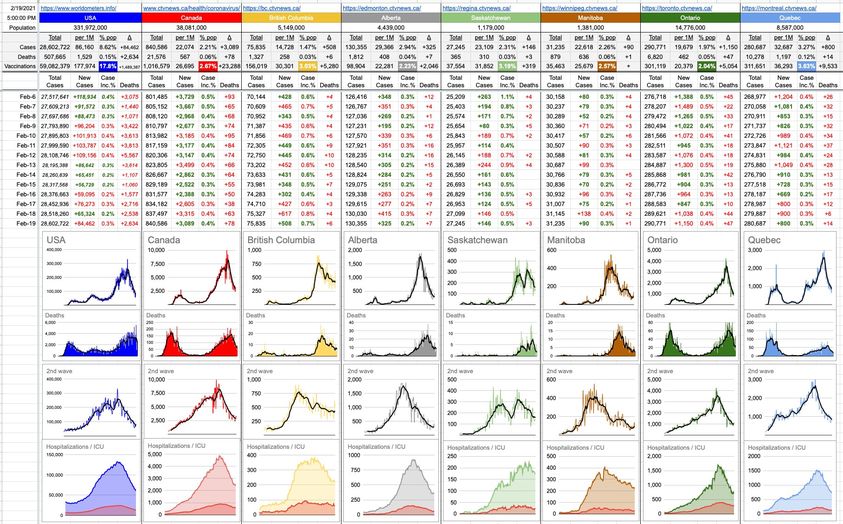March 7, 2021
We’ve all had colds before… the little sniffles. It’s annoying, but nothing some chicken soup and/or lemon tea and/or NeoCitran and/or a warm blanket and/or lots of water can’t cure.
And if someone said to you ok… here’s the deal… the pandemic is now over, but you have a 50% chance of catching a mild cold in the next 6 months… would you take it?
The overwhelming “HELL YEAH!” that you’re all screaming leads to a path we’re on now, though probably not by original design… because there’s a fundamental aspect to C19 and vaccines that perhaps wasn’t entirely expected, but that emerging data suggests… which is that a single shot of any vaccine of our “big 4” – Pfizer, Moderna, AstraZeneca and now Johnson and Johnson – prevents serious illness 100% of the time. Yes, it’s a bold statement, one worthy of marketing departments… but this one is coming from the science.
Two shots of Pfizer and Moderna suggest a 95% chance of not getting sick at all… and the appropriate doses of the other ones also suggest a remote chance of illness if you follow the directions… but proper recommended usage aside, one single shot… and you’re good.
Entering the mix (in Canada) as of Friday is the newly approved J&J vaccine… which, in the context above, is a true game changer. Its numbers don’t reach the lofty heights of 95% efficacy, but it’s becoming apparent that’s not so important. Should we take the Ferrari with a top speed of 340km/h? Perhaps the Porsche, but it only goes to 280kmh. How about the Tesla, which accelerates faster than those two… but is capped at 200km/h?
Dude, we’re going to the 7/11 that’s a block away. Take the bike. Or walk. We don’t need to get fancy here.
The J&J vaccine efficacy is in the 65%-75% range… compared to the 95% of Moderna and Pfizer. J&J serious illness and death rate 28 days after the dose (at which time its full effects have kicked in): Zero. Not a single case of hospitalization or death.
From a “fancy” point of view, J&J isn’t top 2… but who cares. It gets us there… and it does so in game-changing ways: It’s single dose, and it’s easily stored at convenient temperatures… for months. Don’t like needles? It’s only one. Don’t like side-effects? Far less reported with J&J. Allergic to preservatives in vaccines? J&J seems more tolerable. And, unlike mRNA vaccines, this one is optimized to both antibody and T-cell responses. Accordingly, it doesn’t need tuning to new variants… and therefore has been shown to be more effective against the South African variant. Pfizer and Moderna have modified their vaccines for these new variants, but J&J doesn’t require it… which implies it probably won’t require it for future variants either.
Red-lining the first doses seemed a little premature and perhaps not-so-well thought out when it started. In fact, I wrote some words to that effect; why mess with the science? The answer to that rhetorical question is the basis of science itself. To some extent, we’re all part of a big experiment… but assuming it’s being handled correctly, we should be able to trust the results… and the results are telling us a lot. Different people interpret them in different ways, but this is all not speculative guesswork… there’s a method to the madness. For example, it’s dawned on me that perhaps the province of Quebec has no intention of *ever* giving out second doses of Pfizer or Moderna… because, as per above… what’s better…. 95 people out of 100 who will never get sick at all… or, 200 people, none of whom will develop a serious illness or die? They’re betting on the latter, and so far, perhaps correct in their assumptions. Their hospitalizations and ICU admissions have been trending sharply down consistently; just look at the pretty pictures. They might just keep doing this until the pandemic fizzles out, and the answer to “When do we get our second shot?” will be “Next flu-shot season”.
The issue with vaccines that we’re quickly approaching has more to do with vaccine acceptance, though that’s also turning a good corner in some places. There seems to be a core of around 20% of people that adamantly refuse to consider the vaccine. The other 80% has been a spectrum based on hesitancy, but it’s mostly sliding in the right direction; more and more people seeing what’s going on around them and realizing that indeed… the vaccine is useful, the vaccine is safe and the vaccine is an integral part of all of us getting back to normal. That’s here in Canada. Our neighbours down south?
Last November, before any vaccines had actually been approved, 51% of Democrats said they’d get vaccinated when possible… as opposed to 43% of Republicans. Asking that question today yields this: 78% of Democrats would say yes… but only 47% of Republicans would agree. In fact, 44% of Republicans say, adamantly, “Never”. Interesting — but not surprising — that their cult leader and his entire family all quietly got vaccinated when no one was looking.
I’ll stop here because you know exactly what the next 3 paragraphs would say.
17 Likes, 2 Shares



